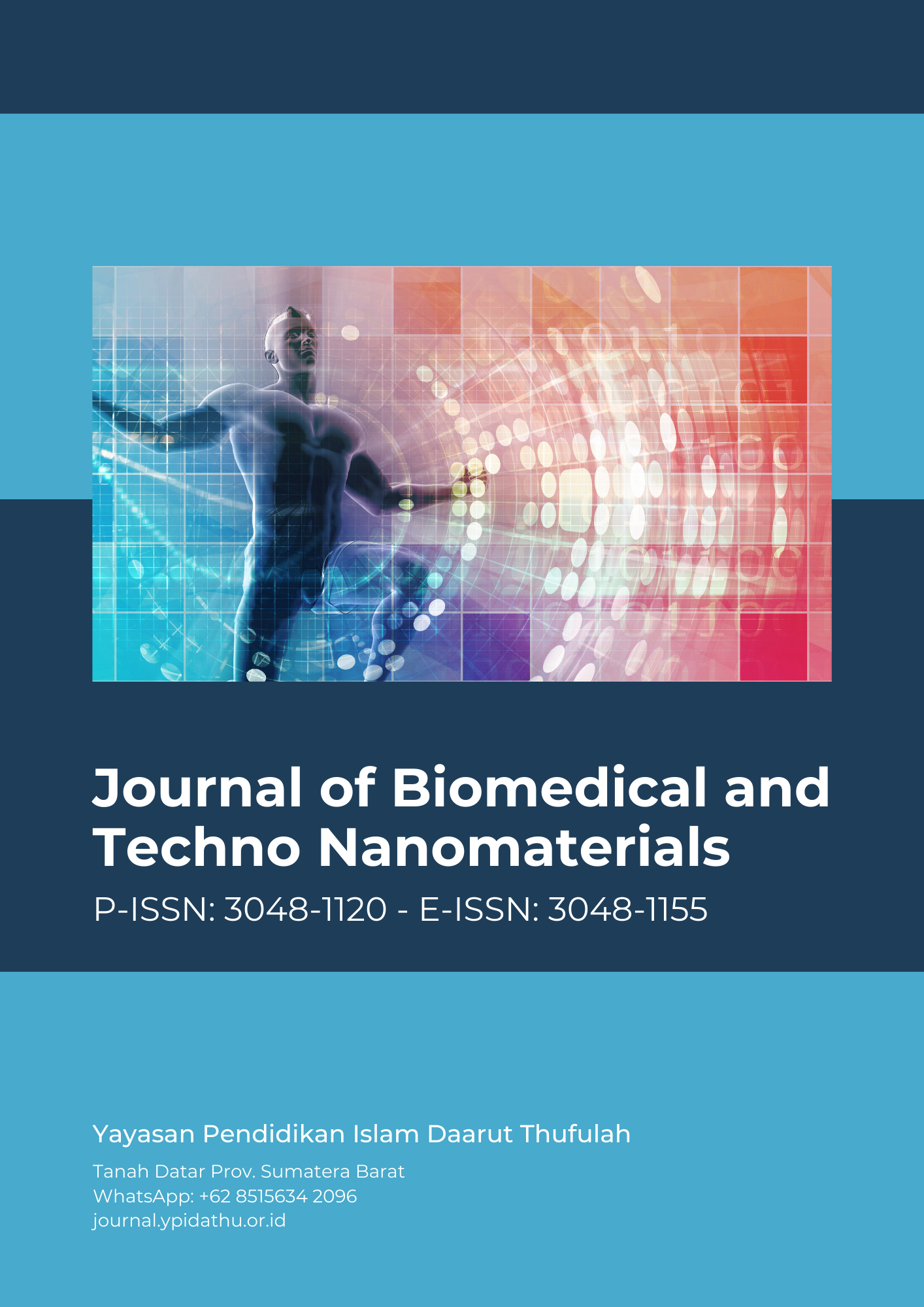Abstract
Cardiac surgery is a critical field where the selection of biomaterials and biodevices can significantly impact patient outcomes. Different countries utilize various biomaterials and biodevices in cardiac procedures, influenced by factors such as technological advancement, regulatory environments, and healthcare infrastructure. Understanding the comparative effectiveness of these materials and devices across different regions is essential for optimizing patient care. This study aims to conduct a comparative analysis of biomaterials and biodevices used in cardiac surgery across multiple countries. The research seeks to evaluate the effectiveness, safety, and patient outcomes associated with these materials and devices, providing insights into best practices and potential areas for improvement. A mixed-methods approach was employed, combining quantitative data from clinical trials and patient records with qualitative insights from healthcare professionals. Data were collected from cardiac surgery centers in the United States, Germany, Japan, and Brazil. Quantitative measures included patient recovery rates, complication rates, and device longevity. Qualitative data were gathered through interviews and surveys with surgeons and medical staff, focusing on their experiences and perceptions of the materials and devices used. The study found significant variations in the effectiveness and safety of biomaterials and biodevices across different countries. Biomaterials used in Germany and Japan showed higher patient recovery rates and lower complication rates compared to those used in the United States and Brazil. Differences in regulatory standards, technological access, and surgeon preferences were identified as key factors influencing these outcomes. Qualitative data indicated a preference for locally produced devices in Japan and Germany, attributed to higher perceived quality and reliability. This multinational study highlights the disparities in the use and outcomes of biomaterials and biodevices in cardiac surgery. The findings suggest that adopting best practices and high-quality materials from countries with superior outcomes could enhance patient care globally. Further research and international collaboration are recommended to standardize the use of biomaterials and biodevices, ensuring optimal patient outcomes in cardiac surgery.
Full text article
References
Arrangoiz, R. (2016). Melanoma Review: Epidemiology, Risk Factors, Diagnosis and Staging. Journal of Cancer Treatment and Research, 4(1), 1. https://doi.org/10.11648/j.jctr.20160401.11
Chandra, R. (2020). Gambaran Klinis dan Patologi Melanoma Maligna Kutaneus. Cermin Dunia Kedokteran, 47(11), 673. https://doi.org/10.55175/cdk.v47i11.1193
Houghton, A. N., Coit, D. G., Daud, A., Dilawari, R. A., DiMaio, D., Gollob, J. A., Haas, N. B., Halpern, A., Johnson, T. M., Kashani-Sabet, M., Kraybill, W. G., Lange, J. R., Martini, M., Ross, M. I., Samlowski, W. E., Sener, S. F., Tanabe, K. K., Thompson, J. A., Trisal, V., … Walker, M. J. (2006). Melanoma: Clinical practice guidelines in oncologyTM. JNCCN Journal of the National Comprehensive Cancer Network, 4(7), 666–684. https://doi.org/10.6004/jnccn.2006.0057
Just a moment... (n.d.). Retrieved May 12, 2024, from https://www.thelancet.com/journals/lancet/article/piiS0140-6736(13)60802-8/fulltext
Kachroo, S., & Gowder, S. J. T. (2016). Gene therapy: An overview. Gene Technology, 5(1), 1–14.
Little, J. W. (2006). Melanoma: Etiology, treatment, and dental implications. General Dentistry, 54(1), 61–66; quiz, 67.
Lnterferon?? gene therapy for cancer: Basic research to clinical application—Yoshida—2004—Cancer Science—Wiley Online Library. (n.d.). Retrieved May 12, 2024, from https://onlinelibrary.wiley.com/doi/abs/10.1111/j.1349-7006.2004.tb02194.x
McCourt, C., Dolan, O., & Gormley, G. (2014). Malignant Melanoma: A Pictorial Review. The Ulster Medical Journal, 83(2), 103–110.
Wargasetia, T. L. (2005). Terapi Gen pada Penyakit Kanker. 4(2).
Widyastuti, D. A. (2017). TERAPI GEN: DARI BIOTEKNOLOGI UNTUK KESEHATAN. Al-Kauniyah: Jurnal Biologi, 10(1), 59–72. https://doi.org/10.15408/kauniyah.v10i1.4864
Yu, M. (1996a). Advances in Cancer Gene Therapy. McGill Journal of Medicine, 2(2), Article 2. https://doi.org/10.26443/mjm.v2i2.702
(Malignant Melanoma: Skin Cancer?Diagnosis, Prevention, and Treatment - Critical ReviewsTM in Eukaryotic Gene Expression, Volume 30, 2020, Issue 4 - Begell House Digital Library, n.d.)
Lerner, B. A., Stewart, L. A., Horowitz, D. P., & Carvajal, R. D. (2017). Mucosal Melanoma: new insights and therapeutic options for a unique and aggressive disease. Oncology (08909091), 31(11).
Eyquem, J., Mansilla-Soto, J., Giavridis, T., Van Der Stegen, S. J. C., Hamieh, M., Cunanan, K. M., Odak, A., Gönen, M., & Sadelain, M. (2017). Targeting a CAR to the TRAC locus with CRISPR/Cas9 enhances tumour rejection. Nature, 543(7643), 113–117. https://doi.org/10.1038/nature21405
Gloria, M. (2023, Juli 20). Customizing CAR-T cell-based applications using the CRISPR-Cas9 system | IDT. Integrated DNA Technologies. https://sg.idtdna.com/pages/education/decoded/article/customizing-car-t-cells-using-the-crispr-cas9-system
Parambi, D. G. T., Alharbi, K. S., Kumar, R., Harilal, S., Batiha, G. E.-S., Cruz-Martins, N., Magdy, O., Musa, A., Panda, D. S., & Mathew, B. (2022). Gene Therapy Approach with an Emphasis on Growth Factors: Theoretical and Clinical Outcomes in Neurodegenerative Diseases. Molecular Neurobiology, 59(1), 191–233. https://doi.org/10.1007/s12035-021-02555-y
Ramsden, D. A., & Nussenzweig, A. (2021). Mechanisms driving chromosomal translocations: Lost in time and space. Oncogene, 40(25), 4263–4270. https://doi.org/10.1038/s41388-021-01856-9
Rupp, L. J., Schumann, K., Roybal, K. T., Gate, R. E., Ye, C. J., Lim, W. A., & Marson, A. (2017). CRISPR/Cas9-mediated PD-1 disruption enhances anti-tumor efficacy of human chimeric antigen receptor T cells. Scientific Reports, 7(1), 737. https://doi.org/10.1038/s41598-017-00462-8
Wargasetia, T. L. (2005). Terapi Gen pada Penyakit Kanker. 4(2).
Zhang, F., Wen, Y., & Guo, X. (2014). CRISPR/Cas9 for genome editing: Progress, implications and challenges. Human Molecular Genetics, 23(R1), R40-46. https://doi.org/10.1093/hmg/ddu125
Authors
Copyright (c) 2024 Grace Goldstein, Vaishnaw Rachel, Bulczynski Neeshi

This work is licensed under a Creative Commons Attribution-ShareAlike 4.0 International License.

